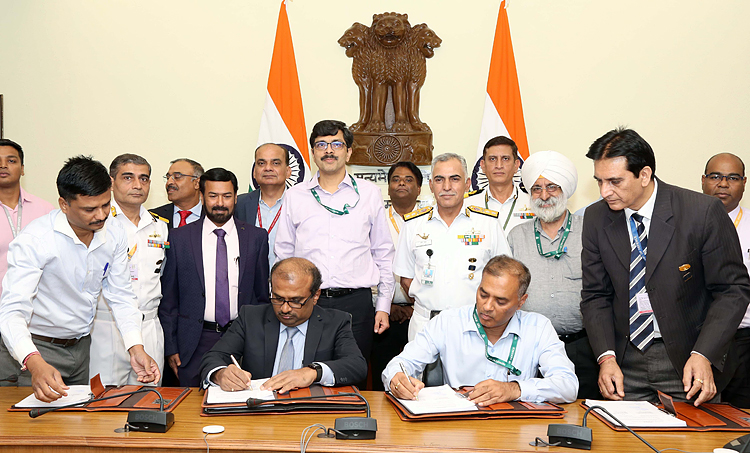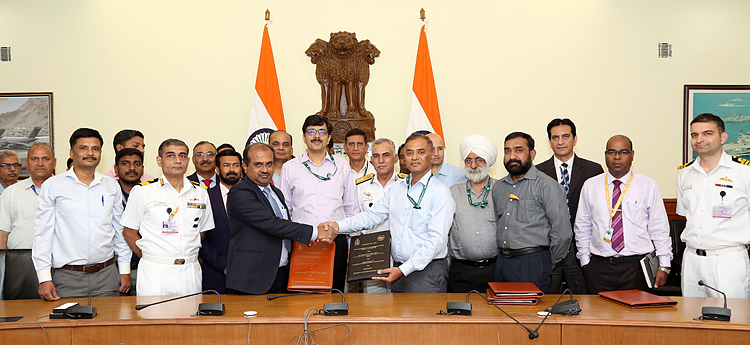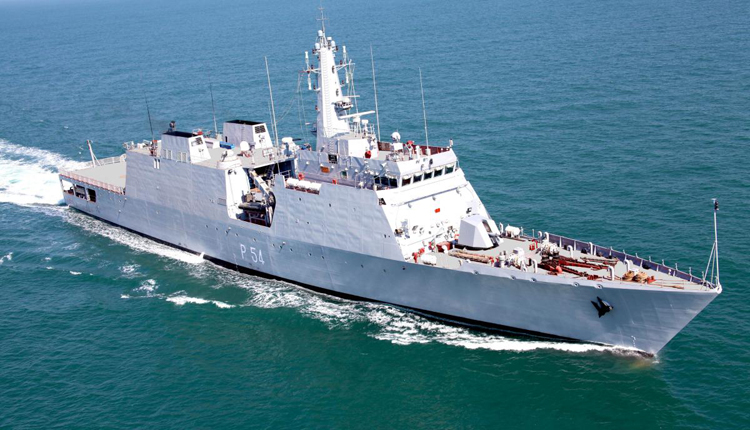INDIAN ARMED FORCES CHIEFS ON OUR RELENTLESS AND FOCUSED PUBLISHING EFFORTS

The insightful articles, inspiring narrations and analytical perspectives presented by the Editorial Team, establish an alluring connect with the reader. My compliments and best wishes to SP Guide Publications.

"Over the past 60 years, the growth of SP Guide Publications has mirrored the rising stature of Indian Navy. Its well-researched and informative magazines on Defence and Aerospace sector have served to shape an educated opinion of our military personnel, policy makers and the public alike. I wish SP's Publication team continued success, fair winds and following seas in all future endeavour!"

Since, its inception in 1964, SP Guide Publications has consistently demonstrated commitment to high-quality journalism in the aerospace and defence sectors, earning a well-deserved reputation as Asia's largest media house in this domain. I wish SP Guide Publications continued success in its pursuit of excellence.
- MoD initiates comprehensive review of Defence Acquisition Procedure 2020, pushes for defence reforms
- G7: The Swansong
- Kalinga Connect: South Asia to Polynesia
- Advanced MRSAM for India for a greater firepower
- Must Credit DRDO for Operation Sindoor, now what is next for defence R&D?
- Operation Sindoor | Day 2 DGMOs Briefing
- Operation Sindoor: Resolute yet Restrained
New Gen Patrol, Missile Vessels
These NGOPVs and NGMVs will boost the combat potential of the Indian Navy, albeit their deliveries are scheduled to commence only from 2026 and 2027 respectively and would take seven to nine years to complete
 |
The Author is Former Director General of Information Systems and A Special Forces Veteran, Indian Army |


On March 30, 2023, the Ministry of Defence (MoD) signed a contract with Indian shipyards for procuring 11 Next Generation Offshore Patrol Vehicles and six Next Generation Missile Vessels at a cumulative cost of 19,600 crores for the Indian Navy. The contract for acquisition of 11 Next Generation Offshore Patrol Vessels (NGOPVs) under Buy (Indian-IDDM) category was signed with Goa Shipyard Limited (GSL) and Garden Reach Shipbuilders and Engineering (GRSE), Kolkata, at a total cost of 9,780 crores. Of the 11 ships, seven will be indigenously designed, developed and manufactured by GSL and four by GRSE. The delivery of these ships is scheduled to commence from 2026.
A statement issued by the MoD said, “The acquisition of these ships will enable the Indian Navy to maintain its combat capability and meet various operational requirements such as Anti-Piracy, Counter-Infiltration, Anti-Poaching, Anti-Trafficking, Non-Combatant Evacuation Operations, Search and Rescue (SAR), Protection off Offshore Assets etc. The construction of these ships will generate employment of 110-lakh man days over a period of seven and a half years.”
The contract for acquisition of 11 Next Generation Offshore Patrol Vessels (NGOPVs) was signed at a total cost of 9,780 crores. Of the 11 ships, seven will be indigenously designed, developed and manufactured by GSL and four by GRSE. The delivery of these ships is scheduled to commence from 2026.
The second contract signed by the MoD was for acquisition of six Next Generation Missile Vessels (NGMVs). This was signed with Cochin Shipyard Limited (CSL) for 9,805 crores. The delivery of these ships is scheduled to commence from March 2027. The NGMVs would be heavily armed war vessels incorporating stealth, high speed and offensive capability. The primary role of these ships would be to provide offensive capability against enemy warships, merchant vessels and land targets.
The statement issued by the MoD said, “These ships will be capable of conducting Maritime Strike operations, Anti Surface Warfare Operations and would be a potent instrument of sea denial for enemy ships especially at choke points. In a defensive role, these ships would be employed for Local Naval Defence operations and seaward defence of Offshore Development Area.”
The MoD statement further said, “The construction of these ships will generate employment of 45 lakh man-days over a period of nine years. The indigenous manufacturing of these vessels will encourage active participation of Indian shipbuilding and associated industries, including MSMEs. With the majority of the equipment and systems sourced from indigenous manufacturers, these vessels will be a proud flag bearer of Atmanirbhar Bharat.”
The contract for acquisition of six Next Generation Missile Vessels (NGMVs) was signed with Cochin Shipyard Limited (CSL) for 9,805 crores. The delivery of these ships is scheduled to commence from March 2027.
No doubt these NGOPVs and NGMVs will boost the combat potential of the Indian Navy albeit their first deliveries are scheduled to commence only from 2026 and 2027 respectively and would take seven to nine years to complete all deliveries if the planned schedule is adhered to. At the same time, we need to constantly address upgrading the combat capabilities holistically and cannot afford vital voids like of nuclear powered submarines (SSNs) which has been covered in these columns elsewhere.

In the course of delivering a talk on March 14, 2023, Chief of Naval Staff, Admiral Hari Kumar had stated that the PLA has added 148 warships over the last decade, equal to the entire Indian Navy strength. But more significant is the recent statement by the US Department of Defense (DoD) officials, as reported by the US Foreign Affairs reporter on March 28, 2023, saying China would have 150 more ships on the waters than the US by 2028 under the Joe Biden Administration’s budget.
US Navy Secretary Carlos Del Toro told a Senate panel, “By 2028, we will have approximately 291 ships or so. I can’t predict exactly what the Chinese will have, but estimates are upward of 440 or so.” Del Toro provided that comparison as Navy and Marine Corps leaders pitched Congress on a $255.8 billion budget for fiscal 2024, saying, “We find ourselves at an inflection point, one that demands we renew our commitment to naval primacy.”
In only two decades, the PRC has tripled the size of its Navy and is on pace to quadruple to over 400 ships by 2030 to displace the US Navy from the Western Pacific through actions short of war
DoD officials acknowledged that President Joe Biden’s budget request doesn’t even keep up with inflation. The issue that emerged is that the inflation of 2 per cent being talked about actually means 2 per cent below the roughly 4.6 per cent inflation rate that federal officials had predicted over the last two years. Del Toro then told the Senate panel that the actual inflation is around 6 per cent and that the “predictors are often wrong”. US Chief of Naval Operations, Admiral Michael Gilday, told the appropriations panel that in only two decades, the PRC has tripled the size of its Navy and is on pace to quadruple to over 400 ships by 2030 to displace the US Navy from the Western Pacific through actions short of war to impose Beijing’s will on US allies in the Indo-Pacific.
There is no doubt that China wants to kick the US Navy out of the Western Pacific and in the process, the pressure would also mount in the Indian Ocean Region (IOR). India therefore needs to build its naval power speedily and holistically. In terms of defence budgetary allocations, we have the same problems as faced by the US Navy, in that, the “actual” inflation figures are given the short shrift. It is time we face ground realities and prepare for war on all fronts, the sea included.





